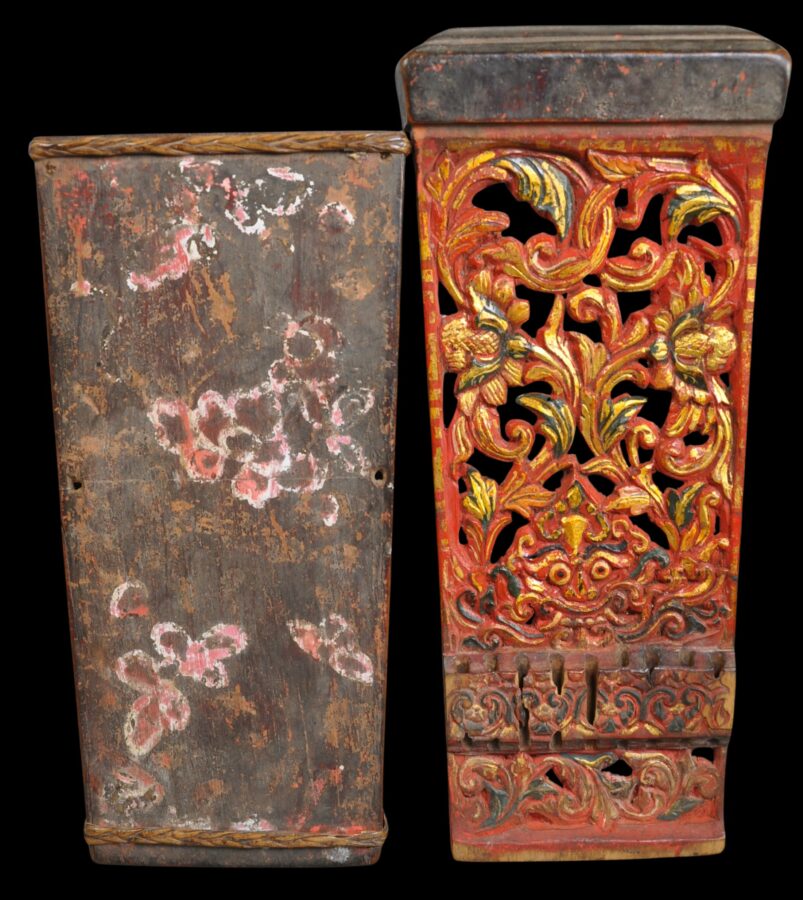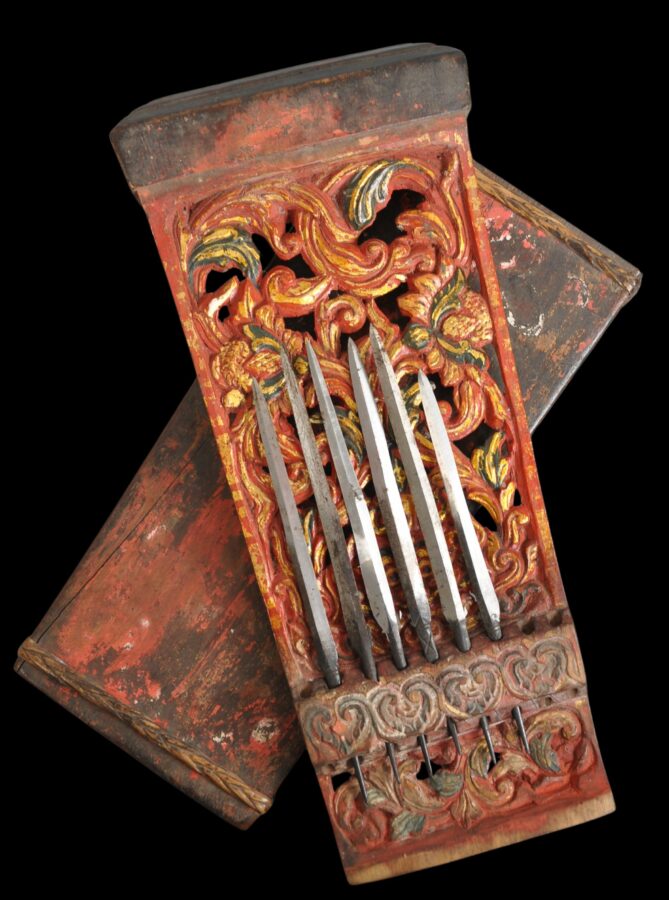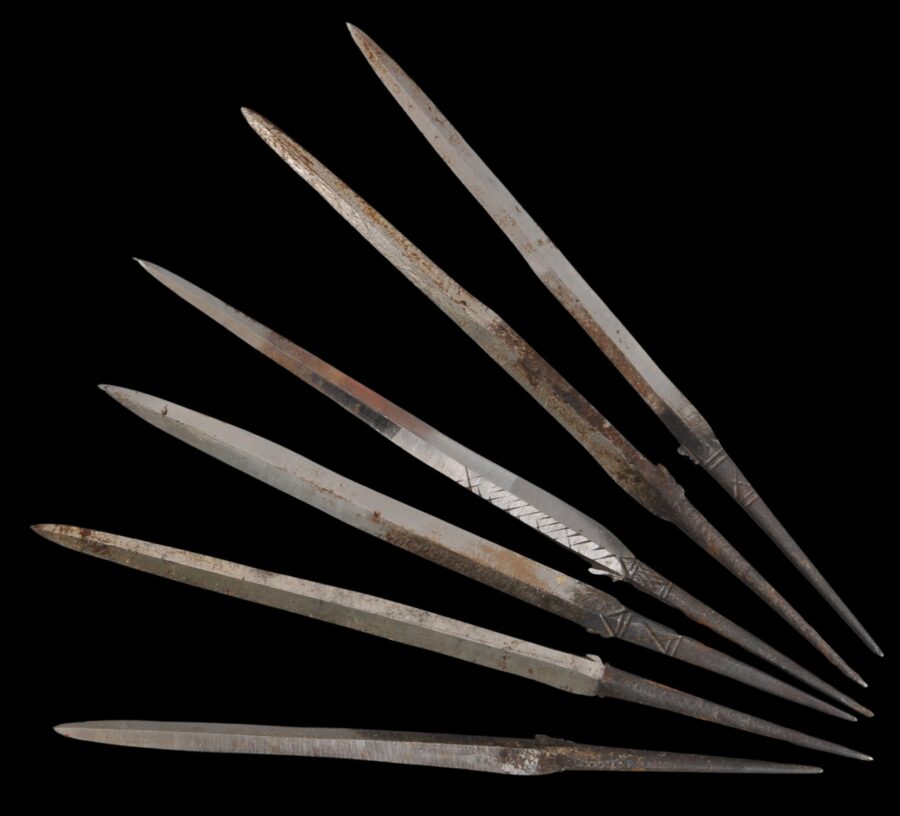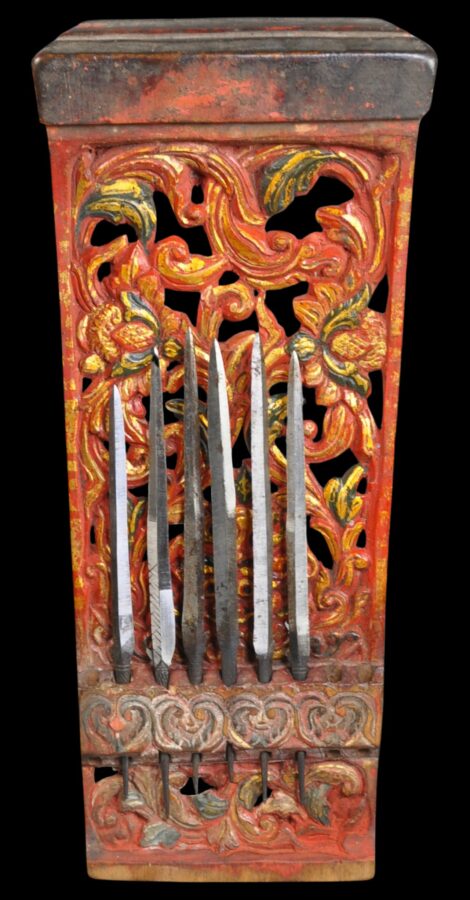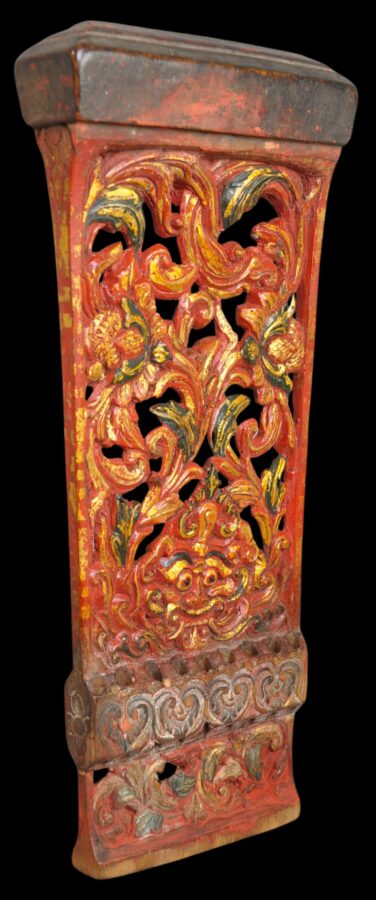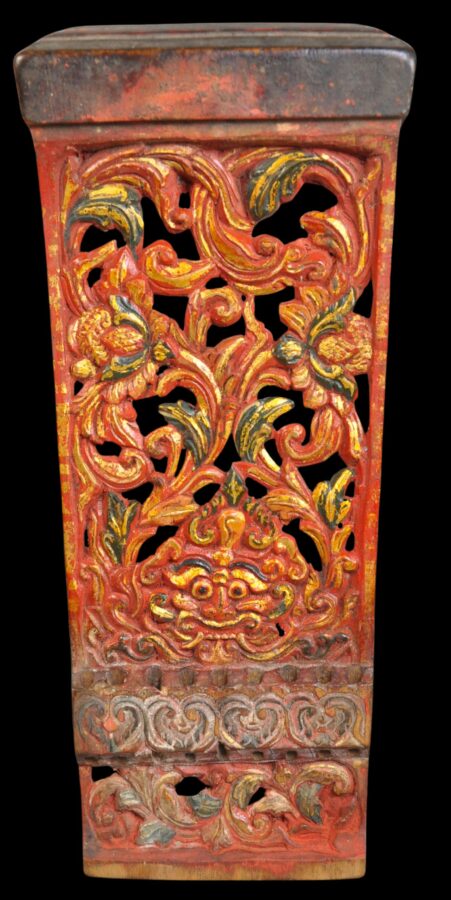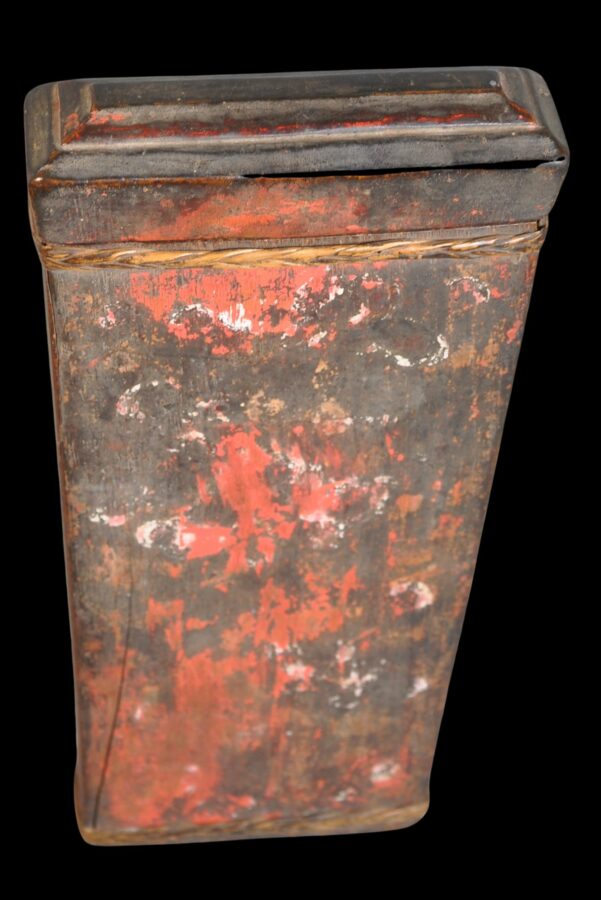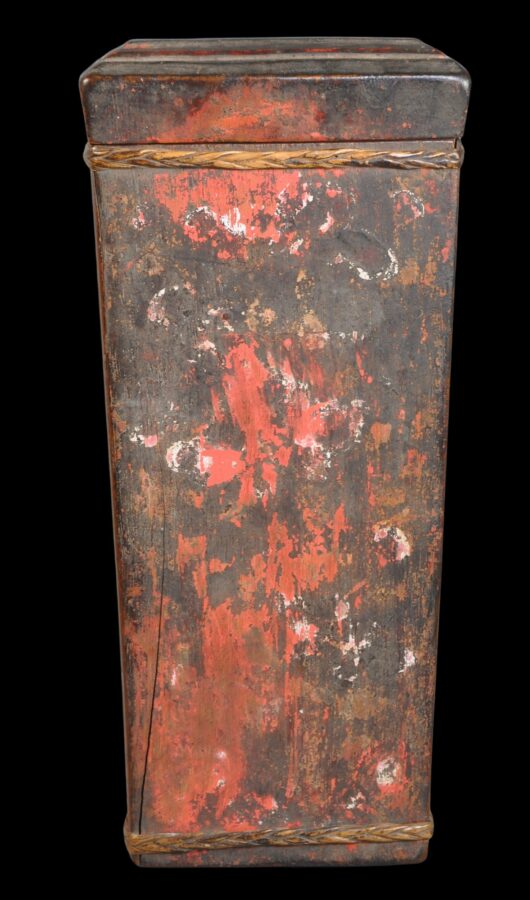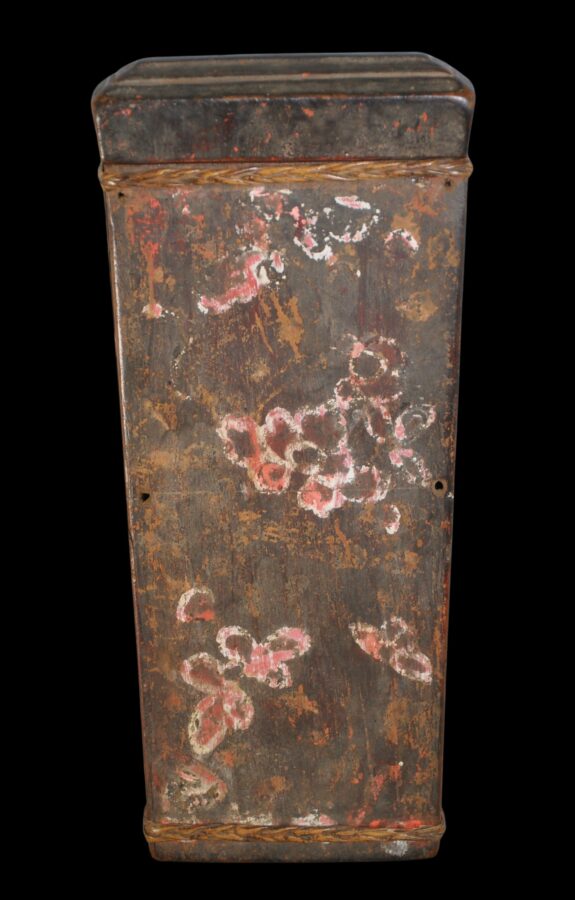This carved wooden fighting cock spur case (kotak taji) along with six actual iron spurs (taji), is among the finest examples of which we are aware, and possibly has princely origins.
The trapezoid-shaped case comprises a wooden outer box secured at the top and bottom with woven rattan strips with beautiful patina, which clips over a sumptuously carved, double-sided interior.
A box of similar form and similar interior carving but lacking the red, gold and green interior decoration, is said to have belonged to the Rajah of Karangasem, a small kingdom in eastern Bali.
The outside cover is decorated in polychrome on both sides with flower motifs, much of which has worn away.
The pull-out interior component is pierced and elaborately and finely carved with scrolling flower and vine motifs with a karang tapel monster face motif in the lower section of the main carved panel. The carving is to both sides.
The pull-out interior slide can hold nine spurs on each side (eighteen in total). Holes have been drilled on each side into which the base of the spurs slide in securely.
The enclosed six spurs are double-edged and each has a small barb near its base to allow the spur to be secured more easily to the leg of the cock or rooster.
Cockspur cases were made and used in many parts of Indonesia, but this example is from Bali, to the east of Java.
Cockfighting has been integral to the cultures of Bali and the practice was banned on Bali only as late as 1981. It was a sport pursued by men and was tied in with religious rituals as well as gambling.
Cock spurs (taji) were regarded in similar terms as the blades for a kris and chanting a mantra while forging a spur was believed to imbue it with magical power. Other rules related to the taji – they should be forged during a new moon, menstruating women were not permitted to even look a taji, nor could one be touched by anyone who had a family member that had recently died (van Donk, 2000).
The case has a superb, deep patina and very evident age. It is without chips or repairs. As mentioned, it is among the best examples we have seen, published or otherwise.
References
van Donk, P., Indonesian Cockspur Cases: Kotak Taji, Hes & De Graaf Publishers, 2000.
Ramseyer, U., The Art and Culture of Bali, Oxford University Press, 1977.



